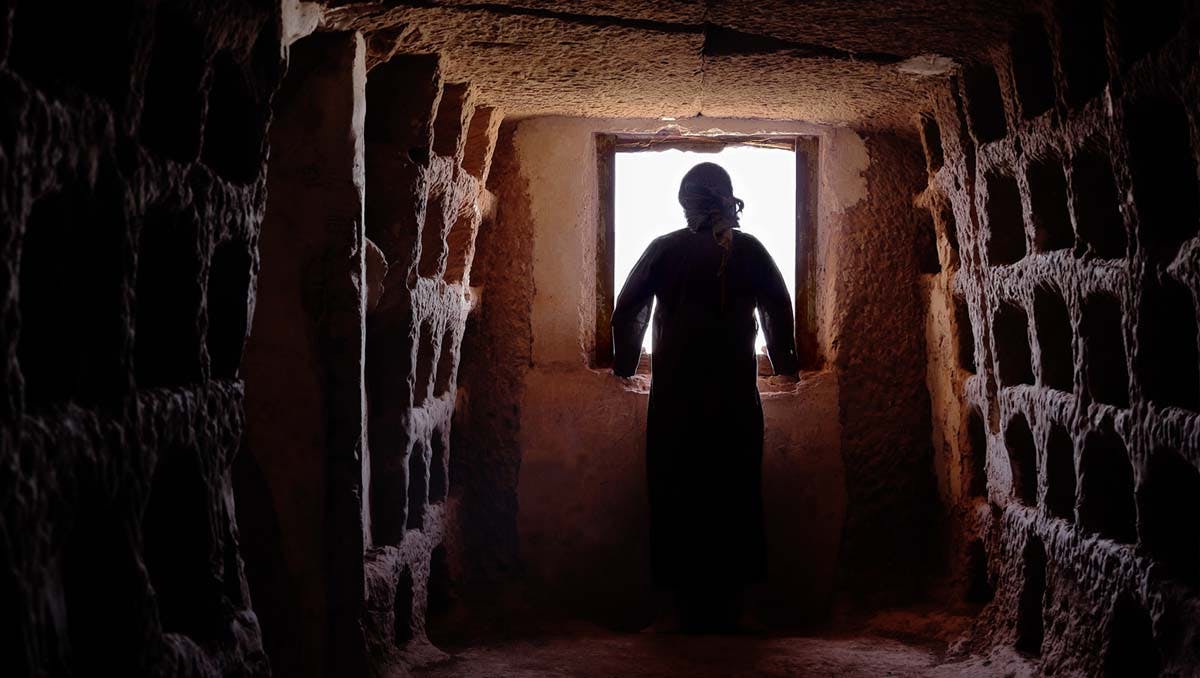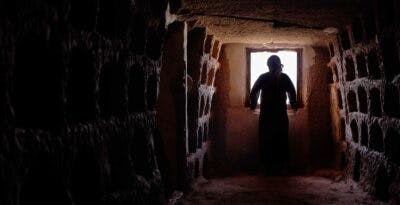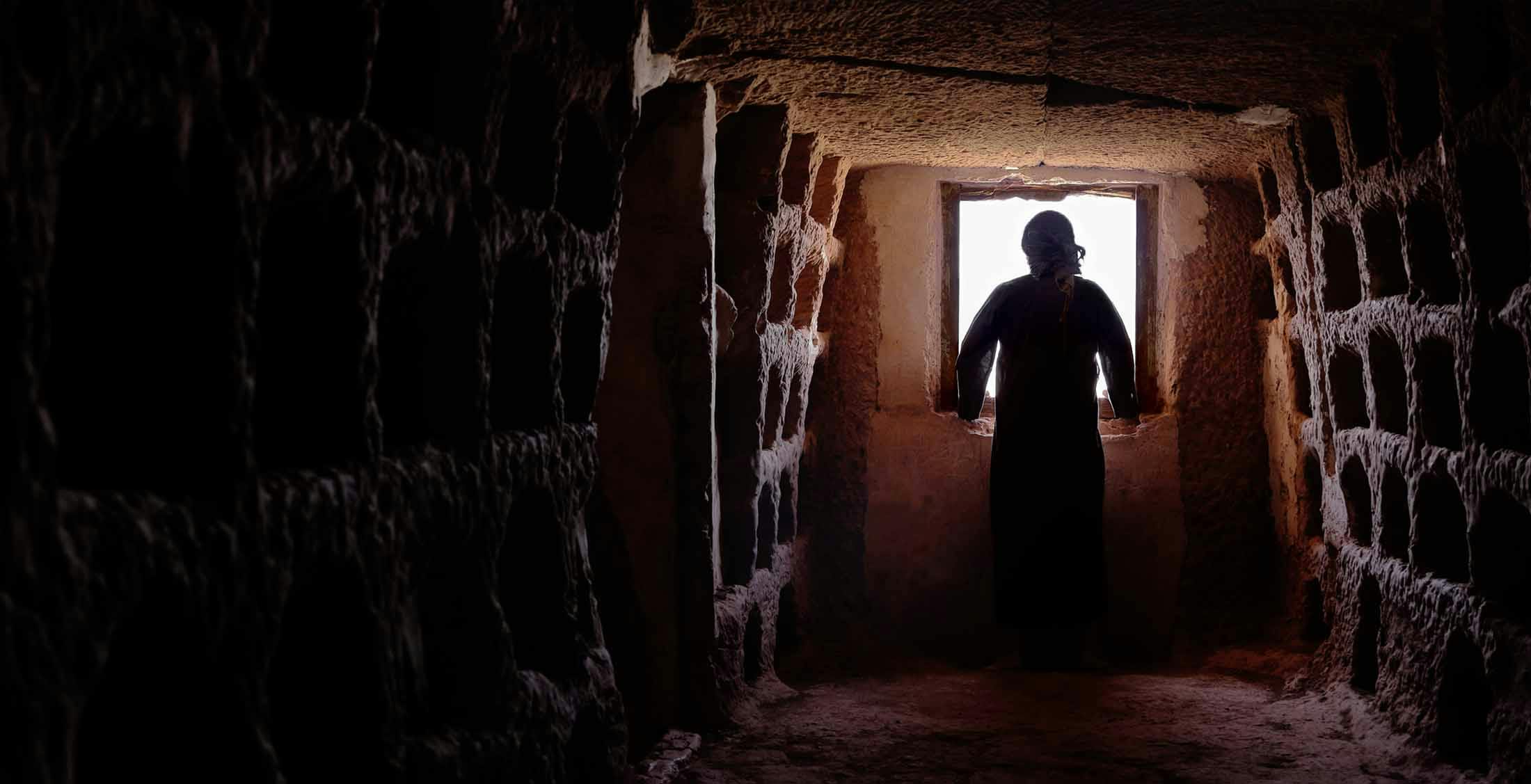
Was Jesus’ Last Supper During Passover?
Many see a historical error in
the New Testament.
by Jews for Jesus | April 06 2022
Around this time each year, we at Jews for Jesus hear a lot of questions about how Jesus’ (Yeshua’s) final week corresponds with Passover. One of the most frequent of these questions has to do with an apparent historical discrepancy between the four accounts of Yeshua’s life in the New Testament.
Yeshua’s biographers, Matthew, Mark, and Luke, clearly say that Yeshua’s last meal with his followers (commonly known as the Last Supper) was a Passover meal, complete with matzah and bitter herbs. But the final biographer, John, seems to describe this meal happening a full 24 hours earlier, the day before the holiday actually began! That, of course, changes the timing of Yeshua’s death and resurrection relative to the holiday as John presents them as well. It’s definitely worth asking what’s going on here? Could the claim that Yeshua’s Last Supper was a Passover celebration be based on myth?
Various Theories
Over the centuries, Jewish, Christian, and secular scholars have handled this and similar issues in a variety of ways. Of course, lots of people have pointed to this apparent discrepancy as a sign that the New Testament biographies of Yeshua are simply unreliable, or even entirely fictional. But the basic historicity of the New Testament is hard to deny.
The New Testament biographies represent whole communities’ recollections of events.
A less extreme theory would be that John merely forgot the exact timing of events. That’s certainly not impossible. But still, you run into the fact that the New Testament biographies represent whole communities’ recollections of events. In that largely pre-literate culture, people relied on memorizing techniques1 and frequent retelling of eyewitness stories to accurately record important events in living memory.2 It’s hard to imagine John and his community having mass amnesia about key facts in the most important events in Yeshua’s life.
One ancient theory of how to deal with apparent historical discrepancies in the biographies of Jesus comes from an early Christian thinker named Origen of Alexandria. He wrote the first ever, full commentary on John’s biography of Yeshua, though, unfortunately, the section on Jesus’ last meal has not survived. But generally, he argued that John had adjusted some of the “material” (i.e., physical or chronological) details in his biography in order to convey deeper “spiritual” (i.e., theological) meanings.3
Some modern Christian thinkers take a similar view based more in a literary understanding of John’s work. The idea is that it would have been understood in his era that John was at liberty, not only as a biographer but also as an interpreter of the meaning of these events, to adjust small chronological details in order to make a thematic point.4 So, he moves Yeshua’s last meal by a day in order to set the crucifixion at the same time as the sacrificing of the Passover lambs. That’s a nicely simple explanation, but many other Christian thinkers would insist on a stronger view of historical accuracy in the New Testament.
A More Commonplace Explanation
Part of the problem with history is that we always want it to be neat and tidy. We want all the explanations and dates to align perfectly, but they never do, not necessarily because our memory is wrong, but because real life is messy.
We often find that out when we delve into our own personal family histories. You’ll find some facts that don’t seem to line up in the accounts of the life of some deceased relative, but then you ask your grandparents about it and find out that some small, inconsequential detail of history accounts for what had seemed to be an irreconcilable conflict.
Real history is full of little blips in the data.
When asking about discrepancies in ancient historical accounts, we have to keep in mind that there may have been long-lost details of history that hold the explanations for why an account seems to have an unlikely event or a chronological error.5 Real history is full of little blips in the data like this. Historical sources where everything aligns perfectly should be treated with more skepticism.6
Could there be this kind of commonplace explanation that would account for the apparent discrepancy between John and the other three biographers? Unlike all the theories listed above, could there be an explanation that is drawn from the context of life in first-century Israel?
In fact, there could be. And one such theory that bears consideration was suggested by a rabbi in the late nineteenth century.7 It has to do with arguments about how to calculate the calendar (which was a very difficult and often politically contentious activity in the premodern world).
It turns out that the dating of Shavuot and Passover was a point of some contention between the two most prominent Jewish leadership groups in Israel in Yeshua’s time: the Pharisees and the Sadducees. There’s reason to believe that in the year that Yeshua celebrated his last meal with his disciples, there were large portions of the community celebrating the Passover on different days, one a day before the other. That’s the kind of scenario that occurred sometimes in the ancient world—different communities marking Passover at different times went on for centuries.8 In fact, it still happens today!
That kind of occurrence could offer a straightforward explanation for the apparent discrepancy in the dating of Yeshua’s last meal. So, here’s a look at the theory in more detail.
Rabbi Isaac Lichtenstein’s Theory
Rabbi Isaac Lichtenstein, a Hungarian Orthodox rabbi and follower of Yeshua (1824–1908), wrote a Hebrew commentary on the New Testament. In it, he offers a unique harmonization that stays true to all versions of the events and employs Jewish sources.
To begin with, one must get familiar with the politics of the day. In Yeshua’s time, the Pharisees and the Sadducees were engaged in a debate over how to observe Shavuot (Pentecost), the first major holiday after Passover. The Torah tells us that after Passover, the first fruit offering should be given the day after the Shabbat (Leviticus 23:11). The Sadducees interpreted this to be the first Sunday in the week of Passover, and the Pharisees said it meant the day after the Yom Tov,9 Nisan 16. As history shows us, Pharisaic interpretations usually ended up being the most popular with the masses. That meant our ancestors were successful in forcing the Sadducees to observe most things according to Pharisaic interpretation. But there was at least one time that the Sadducees found a way around that.
In those days, the Sanhedrin decided the date of a new moon by witness observation. Once the witness reported to the Sanhedrin, they could declare the beginning of the new month. Lichtenstein remembers an anecdote from the Talmud which records that there was an occasion when the Sadducees bribed witnesses to manipulate the date of Passover.10 He believed the same thing happened this year (AD 30), or perhaps that it was the same occurrence described in his study of Talmud. The Sanhedrin declared the new month began one day late, and everything was off by 24 hours. This effectively moved the first night of Passover from a Thursday night to a Friday night. However, as the Pharisaic movement was more influential with the people, it’s quite likely many, or even most people, would have insisted on celebrating the holiday on the original dates. That would include many of Yeshua’s closest disciples.
However, there are clues in John’s writing that suggest that he was a Levite and was influenced by Sadducean politics and rituals (and other ancient sources make that explicit claim).11 If that’s true, it makes sense that his version of the story would be according to the Sadducean ruling. However, we know that Yeshua was regarded as part of the Pharisaic community and chose to hold his observance on the original date for more than one reason.
Lichtenstein writes:
Yeshua did this rightly, for by the principles of the Pharisees, both of these days were valid as holy days, because the sanctification of the pilgrim feasts depended upon the court and upon the people of Israel; for it is Israel that sanctifies the times. Even if they err or act presumptuously, the day is still holy—as I suggest above—and Yeshua’s disciples understood this. It was only because his hour was near and he wanted to fulfill the commandment of the Passover that he joined himself with this sect, to eat his Passover on the fifth day in the evening. And if not this, he would have waited until the next day in line with the majority of Israel.
That is why, I believe, his disciples imagined that he was asking Judas to buy things needed for the Feast, as it appears to me in John 13:29. For the main feast was the next day in the evening for the majority of Israel … the Master would eat the Passover with his disciples and would fix a “meal on the holy evening,” and along with this would be killed on the eve of Passover, thus himself becoming the true Passover lamb. (John 19:36)12
In short, Lichtenstein argues that Matthew, Mark, and Luke record Yeshua’s observance of the sectarian chronology, and John reports the observance of the accepted majority that was endorsed by the religious rulers.
And Lichtenstein is not the only person to have suggested such a theory. Similar ideas about the date of Passover have been offered by more recent scholars. In an extensive discussion, Harold Hoehner summarizes variations on Lichtenstein’s thesis (which appear to have been arrived at independently of Lichtenstein). He concludes that Galileans and Sadducees used a sunrise-to-sunrise method of calculating when a new day began, whereas Judeans and Pharisees used a sunset-to-sunset method. The difference again would mean that Passover would be celebrated by different groups and in different regions on different days.13
These theories are necessarily speculative; unless some new historical source is unearthed, they cannot be proven. But they give us working examples of plausible scenarios that could explain the apparent discrepancy in the historical record.
A More Important Point
People who argue that this apparent discrepancy in dating casts doubt on the reliability of the New Testament overlook a much more striking reality. The fact that we have between four and six primary historical sources for Yeshua’s last meal with his disciples is quite unusual. Many historical events of great consequence from that period have only one or two primary sources.
That puts the events of Yeshua’s death and resurrection squarely within that ancient Passover week.
To have so many primary sources for a historical detail so minute as when a popular first-century rabbi ate a particular meal with his 12 closest friends is not common! And the fact that we can pinpoint it to either exactly on Passover or a day before is really striking. That puts the events of Yeshua’s death and resurrection squarely within that ancient Passover week, no matter whether you think Yeshua and his disciples celebrated the meal a day early or not.
This level of historical reliability on the details of Yeshua’s life and his final week is an important part of what informs our belief that Yeshua really is the risen Messiah. And for those of us who do believe, the entire week of Passover should fill us with awe, contrition, and joy, when we remember not only God’s faithfulness to redeem us from slavery, but the unfailing love of the Messiah.
Endnotes
1 For instance, many New Testament scholars point to Paul’s recitation of historical events in 1 Corinthians 15:1–8 as an example of an ancient memory guide. It’s a simple, easily memorizable creed that might date to the first years after Jesus’ death and resurrection.
2 Richard Bauckham, Jesus and the Eyewitnesses: The Gospels as Eyewitness Testimony (Grand Rapids: Eerdmans Publishing, 2006).
3 Origen, Commentary on Gospel of John, vol. 10, point 4. The portion of Origen’s commentary that pertained to the Last Supper is lost to history. But he deals with similar issues where John does not correspond to the other three New Testament biographies of Jesus. And it’s very likely he understood the apparent discrepancy of the Last Supper in the same way.
4 For instance, moving the event when Jesus chased the money changers from the Temple from the end of his ministry (where the other three writers place it) to the beginning (John 2:13–17; Matthew 21:12–13; Mark 11:15–17; Luke 19:45–46). Luke’s biography of Jesus also clearly rearranges the chronology of the earlier work of Mark in order to make a clear thematic arrangement of the events. Though modern biographers are expected to strictly denote accurate chronology at every point, they do a very similar thing where they tell you their subject’s story out of order. Neither the ancient nor the modern authors are trying to trick their audiences; their goal is to convey a meaning deeper than the mere recitation of chronological events.
5 An example of this from the New Testament can be seen in the extra details that John’s biography of Jesus gives to the story of how Peter follows Jesus to his trial, which is only briefly sketched in Mark. Mark’s account might leave us very skeptical of how Peter could even get into such an event, but John provides a simple explanation that makes sense of the story (Mark 14:54; John 18:15–18).
6 Often, when there are two or more sources that are perfectly aligned, historians will suspect that one is the original account and the others have merely copied from or adapted parts of the first source. That is the standard explanation for the similarities in Luke’s and Matthew’s biographies compared to Mark’s.
7 This argument was rediscovered by Daniel Lancaster at Beth Immanuel Messianic Synagogue, who described it in a sermon and follow-up article: Last Supper or Last Seder?
8 The Christian community of about the third through eighth centuries had lingering conflicts and controversies over the dating of Easter, which was based on how you calculate the date each year for Passover. This led to different portions of the community celebrating Yeshua’s resurrection on different days every year.
9 A Yom Tov (literally “good day”) is a Jewish festival day, usually the day of the holiday that’s designated as a special Shabbat.
10 Daniel Lancaster, interview by Stephanie Hamman, April 20, 2020. “Lichtenstein derived the idea from the Babylonian Talmud Rosh Hashanah 22b and particularly the Rashi and the Tosefot on that passage, as well as the parallel version in Yerushalmi.”
11 It was speculated as far back as the second century by Polycrates of Ephesus, and it has been argued by modern scholars as well, that John was of the priestly class in Jerusalem, which would make him a Levite and more connected to the ruling class of Jerusalem than the other disciples. John 18:16 especially suggests this to be the case (John often talks about himself as an unnamed third person). You can read more on the arguments for and against this view here.
12 Rabbi Isaac Lichtenstein, Commentary on the New Testament, on Matthew 26:18.
13 Harold W. Hoehner, Chronological Aspects of the Life of Christ (Grand Rapids: Zondervan, 1973).

